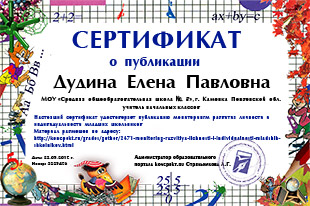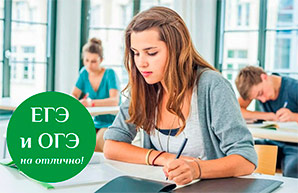Конспект урока английского языка 9 класс «The system of education in the English-speaking countries»
Цели урока:
- сформировать представление о системах образования в англо-язычных странах;
- ввести способ поиска, обобщения и представления информации в диалогической речи
Формы работы: групповая, индивидуальная, фронтальная
Ход урока:
Орг. момент
(приветствие, проверка наличия принадлежностей к уроку, проверка отсутствующих)
Фон. зарядка
The more we learn – the more we know,
The more we know – the more we forget,
The more we forget – the less we know.
So why study?
So, “Why do you study? Why do you go to school?”, “Is education important?”
Pupils: I go to school, because we must get education school;
because secondary education is compulsory;
because we have exams this year;
because it is interesting to study;
because I like to take part in social life;
because knowledge is power;
because I want to get an interesting profession;
because I want to enter a University;
Мозговойштурм.
Answering the questions about the schools in England.
We have read about the schools in England and now let’s answer the questions about them.
Questions:
1. At what age do the pupils go to school in England?
2. What types of schools are there in England?
3. How much per cent of children go to state and private schools?
4. How long do the pupils stay at infant school and what do they learn there?
5. What school do they go to after infant school? How many years do they study there? And what subjects?
6. Describe comprehensive school.
7. What can you say about grammar school?
8. What do the pupils do at the age of 16?
9. What foreign languages learn pupils in school in England?
10. What foreign languages do you learn?
11. Why do you learn English?
Проверка домашнего задания
Работа по карточкам
Find characteristic features for each type of school.
|
A private school |
a school which takes pupils of all abilities without exams |
|
A boarding school |
a school where boys and girls study together |
|
A mixed school |
a school where children live and learn |
|
A public school |
a school for children who have a disability of mind or body |
|
A special school |
a state secondary school in the USA |
|
A comprehensive school |
a school where parents have to pay fees |
1 вариант
1. школа
2. primary
3. частный
4. state
5. boarding school
2 вариант
1. comprehensive
2. private
3. boarding school
4. государственный
5. средняяшкола
Актуализация новых знаний
Look at the pictures and think what subject we have today?
Our subject for today is: «The system of education in the English-speaking countries»
VOCABULARY
|
- free education - quality education - state/public school - private school - «schools of the air» - «schools through the mailbox» - attend a school - to pay for education - strict discipline - wear a uniform |
- бесплатное образование - качественное образование - государственная школа - частная школа - «школы по воздуху» - «школы по почте» - посещать школу - платить за образование - строгая дисциплина - носить школьную форму |
Работа с текстом
Australia
- Education in Australia is compulsory between the ages of 6 and 15.
- Most children (about 70%) study in state schools where education is free.
- In several states of Australia there are “Schools of the Air”.
- “Schools of the Air” are situated in the areas far away from big cities and towns.
- Students attending the Schools of the Air use a two-way radio or other means of communication.
- By listening to the radio, watching TV and video the students learn about the world around them though they stay in their own homes.
- There are also schools “Schools Through the Mailbox” for children who live far away from any school in the area.
- Subjects are divided into one or two-week units.
- Each unit including new material, illustrations, exercises and tests can be sent to pupils any time.
The USA
- About 90% of all children in the USA attend state or public schools where education is free.
- 43 million pupils and students go to public schools and another 6 million are in private schools.
- In private schools parents have to pay for their children’s education.
- Most of the private schools have religious education too.
- The relations between students and teachers in state school are democratic and friendly.
- In American public schools students wear whatever they want.
- Students can choose the subjects they want.to study.
- But some Americans believe that the quality of education is going down.
- Some Americans think that the number of basic subjects is few and do too little homework.
Great Britain
- Most of secondary schools in Great Britain are state schools where education is free.
- Private (or public) schools in England and Wales are very expensive.
- Private (or public) schools are attended by about 5% of the school population.
- The education in public schools is of high quality.
- The discipline in private schools is very strict.
- Most of private schools are either for boys or for girls.
- The private schools are famous for the right friends and contacts which are useful for a successful future.
- In some British schools uniforms are worn by all the pupils, in others the children can wear what they want.
- Harrow school is famous as the place where Winston Churchill was educated? As well as six other Prime Ministers of Great Britain.
TRUE OR FALSE
- In America children starts school at age of 6
- Home schools are in Australia.
- Children do not have a hot lunch at school in Australia.
- Students wear a school uniform in private schools in the UK.
- «Schools of the air» are in the USA.
- In Australia students have summer holidays from December to February.
- In the USA students do not wear a uniform at sate school.
- In the UK students get to school by boat.
COMPLETE THE TABLE
|
Country, information |
% in state or private school |
Age, school start |
Kinds of school |
uniform |
transport |
Summer holidays |
|
The UK |
|
|
|
|
|
June-August |
|
The USA |
|
|
|
|
By bus |
|
|
Australia |
|
6 |
|
|
|
|
Учащимся предлагается приготовить и разыграть диалог, использую опору на слайде и информацию из таблицы. Пары строятся по принципу: корреспондент из одной группы, представитель страны - из другого.
LETʼS INTERVIEW EACH OTHERS
- Hello! Can I ask you some questions?
- Yes, please
- Where are you from?
- I am from_____
- When do the children start school in _____?
- They start school at age______
- What kinds of school are there in_____?
- There are _____ in_______
- Do the children wear a school uniform?
- They (do not) wear a uniform at school
- When do they have summer holidays?
- From_____ to_______
- How do they get to school?
- They get to school by __________
- Do the children have a hot lunch at school?
- They have (have not) a hot Lunch
- Thankyou.
Объяснение д/з
Выводы
Комментирование и выставление оценок



